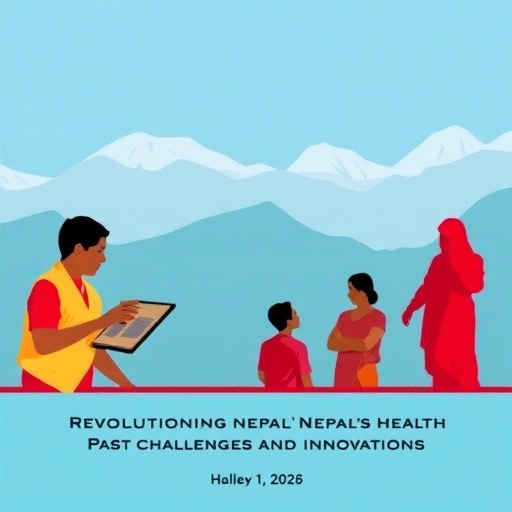
Nepal, often celebrated for its breathtaking landscapes and rich cultural tapestry, faces a daunting array of health challenges. The recent publication by Mishra, Ghimire, Khanal, and their colleagues provides critical insights into the historical and contemporary health landscape of this Himalayan nation. Highlighting the disease burden, systemic challenges, and innovative responses within the healthcare sector, the paper paints a picture of a country at a crossroads, grappling with both age-old problems and modern threats.
Understanding the disease burden in Nepal is essential for grasping the broader context of its healthcare challenges. The country has long dealt with infectious diseases, with conditions like tuberculosis and malaria continuing to pose significant threats, particularly in rural areas where healthcare access remains limited. Moreover, non-communicable diseases are on the rise, driven by lifestyle changes, urbanization, and an aging population. Mishra and his team meticulously detail this dual burden of disease, illustrating how it complicates healthcare delivery in Nepal.
Addressing these challenges requires not only recognition of the problems but also a systemic approach to reform. The historical context detailed in the study indicates that Nepal’s healthcare system has evolved through various phases, shaped by political upheaval, economic transitions, and international influences. From its initially rudimentary organization during the early twentieth century to the current mixed model of public and private service provision, the system reflects both progress and persistent inequities.
The structural issues within Nepal’s healthcare system cannot be overlooked. The authors discuss how funding disparities, insufficient infrastructure, and a chronic shortage of healthcare professionals hinder effective service delivery. Basic health services often remain out of reach for marginalized communities, particularly women, and those living in remote areas. The paper compellingly argues for the need to enhance the capacity of local health facilities, expand access to essential medicines, and invest in the training of healthcare personnel.
In the face of these adversities, innovation emerges as a key theme in the article. The authors highlight various initiatives that showcase how local stakeholders are responding creatively to entrenched problems. For example, mobile health technologies have begun to transform access to information and services in hard-to-reach communities. These innovations reflect a grassroots approach to healthcare, where solutions are tailored to the unique needs of local populations.
The intersection of traditional and modern medical practices is another fascinating aspect raised in the publication. Nepal’s rich history of traditional medicine offers an untapped resource for integrated health solutions. By marrying these time-honored practices with scientific advancements, the authors suggest that the healthcare system can foster a more holistic approach to health and wellbeing. This convergence can also address cultural sensitivities that may otherwise impede the acceptance of modern medical practices.
Moreover, the study emphasizes the role of international cooperation in strengthening Nepal’s healthcare framework. Partnerships with various global health organizations have been pivotal in funding and implementing health programs aimed at addressing both infectious and non-communicable diseases. The authors advocate for sustained collaboration, emphasizing that long-term success hinges on the ability to leverage both foreign assistance and local expertise.
The intricate relationship between policy and health outcomes is another critical focus of the research. The authors navigate through the evolving policy landscape in Nepal, highlighting significant reforms aimed at improving health systems over the past two decades. Despite these endeavors, policy implementation is often hampered by bureaucratic inefficiencies, corruption, and a lack of accountability. The authors call for a stronger commitment to governance reforms that prioritize health as a vital component of national development.
In examining the societal determinants of health, the article sheds light on how socio-economic factors dictate health outcomes in Nepal. Poverty, education, and gender disparities all play a pivotal role in health access and quality. The authors argue that addressing these broader social issues is as crucial as any medical intervention. Interventions focusing on social equity can create a more robust foundation for health improvements across the population.
The ramifications of climate change on health outcomes in Nepal are also meticulously discussed. Increasing weather variability and natural disasters pose unique challenges to public health, exacerbating existing vulnerabilities within the population. The authors encourage proactive measures to mitigate these effects, highlighting the necessity for resilient health systems capable of withstanding environmental and societal shocks.
Throughout the article, Mishra and colleagues emphasize the importance of community engagement in health program design and implementation. The participatory approaches demonstrated in various case studies highlight that when communities are involved in their health solutions, the outcomes are markedly better. This grassroots empowerment not only fosters trust in healthcare systems but also ensures that interventions are more culturally acceptable and effective.
As the article concludes, the authors paint a hopeful picture for the future of health in Nepal. With concerted efforts aligning historical lessons, innovative strategies, and inclusive policies, a transformative path forward is within reach. Such reform is not merely a health imperative; it is a critical component of national development and social progress.
In sum, the article by Mishra et al. serves as a reminder of both the challenges and opportunities inherent in transforming Nepal’s healthcare landscape. As this nation grapples with its complex disease burdens and systemic issues, the collaborative spirit reflected in local innovations, international partnerships, and community engagement emerges as a beacon of hope. With continued commitment and action, Nepal can navigate its healthcare challenges and emerge stronger, healthier, and more resilient.
Subject of Research: Transforming health in Nepal through historical and contemporary analysis.
Article Title: Transforming health in Nepal: a historical and contemporary review on disease burden, health system challenges, and innovations.
Article References:
Mishra, S.R., Ghimire, K., Khanal, V. et al. Transforming health in Nepal: a historical and contemporary review on disease burden, health system challenges, and innovations.
Health Res Policy Sys 23, 61 (2025). https://doi.org/10.1186/s12961-025-01321-z
Image Credits: AI Generated
DOI:
Keywords: Nepal, health system challenges, disease burden, innovations in healthcare, historical health review, mobile health technologies, community engagement, traditional medicine, climate change impacts on health.
Tags: aging population health issuesdisease burden in Nepalhealthcare access in Nepalhealthcare innovations in Nepalhealthcare system reform Nepalhistorical healthcare context Nepalinfectious diseases in rural NepalNepal healthcare challengesnon-communicable diseases risesystemic healthcare delivery solutionstuberculosis and malaria threatsurbanization and health impacts





